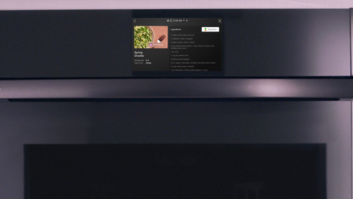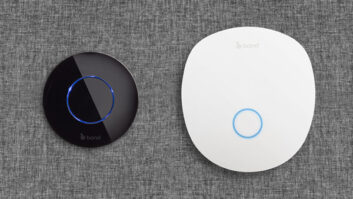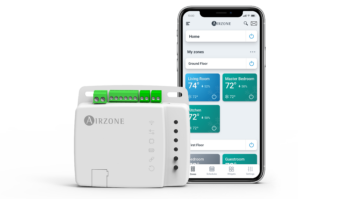Oulu, Finland — Elektrobit, the company that designed TerreStar’s satellite/cellular smartphone, has developed a 3G-enabled mobile internet device (MID) that it expects will be available through branded suppliers in the second half of next year.
The reference-design company, which has designed cellphones for branded manufacturers for 25 years, is targeted cellphone makers, carriers, PC makers and portable navigation device (PND) makers with its Linux-based MID platform, which incorporates 3.9-inch multitouch touchscreen with haptic feedback, 3G W-CDMA HSDPA (high-speed downlink packet access) cellular-data technology, Wi-Fi 802.11 a/b/g, full Firefox Web browser, social-networking features, assisted GPS, onboard maps, and the company’s white-label navigation software to deliver turn-by-turn driving directions.
The 5.3-inch by 2.8-inch by 0.5-inch device also features touch-sensitive controls around the LCD screen, few hard buttons, and ability to store 1080p video and output it to a TV via a mini-HDMI output. Bluetooth, MicroSD slot and a micro USB connection are also included.
The platform is based built on Intel’s second-generation MID platform, called Moorestown.
Although the platform includes cellular voice, the feature can be defeated to turn the device into an Internet-centric device, VP Vesa Kiviranta told TWICE. It can be further customized according to customer needs, enabling companies to bring a customized MID to market faster and with lower development costs than if they developed one on their own, he added. The reference design, for example, uses HSDPA in the 850/1900/2100MHz frequencies, but frequencies can be changed to suit customer needs, he said. HSDPA can also be swapped out for LTE, mobile WiMAX or the CDMA 1X EV-DO family.
The device, and other MIDs, will fit into a market in which smartphones, MIDs and netbooks will coexist, Elektrobit said. MIDs, including the iPhone, sit between smartphones and netbooks, Kiviranta explained. MIDs feature 3.5- to 5-inch screens in a package that’s “bigger than you would like for calling” but is nonetheless pocket-sized, he explained. In addition, MIDs are always online and enable full Internet browsing.
Potential end users include consumers who would carry two devices, Kiviranta said. One would be a small standard-issue cellphone, and the other would be an Internet-centric device with a larger display, he continued. For this scenario to fly, however, carriers will have to bundle both devices with a single subscription, he noted.
People who prefer to carry a single device would opt for a smartphone with a maximum 3.5-inch display and all the compromises that entails, he said. Some smartphone owners, however, might opt to carry both a smartphone and a netbook, he added.
To be successful, MIDs must incorporate 3G or 4G cellular data or be paired with a 3G or 4G phone that doubles as a cellular-data modem, Kiviranta added. “The use case dramatically narrows if you go only with the hot spot approach.” Falling 3G and 4G service prices will drive MID sales, he added.













